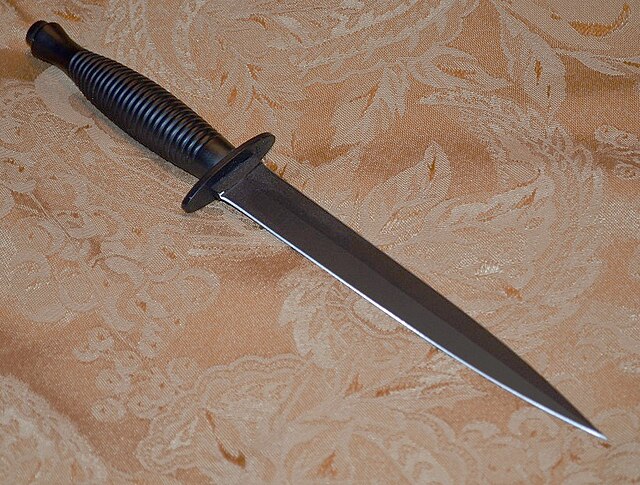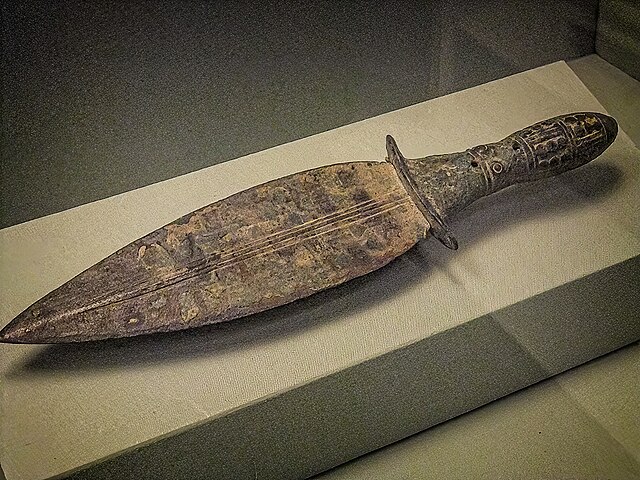A dirk is a long-bladed thrusting dagger. Historically, it gained its name from the Highland dirk where it was a personal weapon of officers engaged in naval hand-to-hand combat during the Age of Sail as well as the personal sidearm of Highlanders. It was also the traditional sidearm of the Highland Clansman and later used by the officers, pipers, and drummers of Scottish Highland regiments around 1725 to 1800 and by Japanese naval officers.
Scottish dirk, blade by Andrew Boog, Edinburgh, c. 1795, Royal Ontario Museum
Painting of George Gordon, 5th Duke of Gordon (1770–1836) in highland dress.
Dirk (Polish: Kordzik); element of uniforms as well, e.g. of officers in the Polish army air force; 74 × 370 mm in Muzeum Miniaturowej Sztuki Profesjonalnej Henryk Jan Dominiak in Tychy
Japanese WW2 naval dirk
A dagger is a fighting knife with a very sharp point and usually one or two sharp edges, typically designed or capable of being used as a cutting or thrusting weapon. Daggers have been used throughout human history for close combat confrontations, and many cultures have used adorned daggers in ritual and ceremonial contexts. The distinctive shape and historic usage of the dagger have made it iconic and symbolic. A dagger in the modern sense is a weapon designed for close-proximity combat or self-defense; due to its use in historic weapon assemblages, it has associations with assassination and murders. Double-edged knives, however, play different sorts of roles in different social contexts.
The Fairbairn–Sykes fighting knife, a modern-day dagger
A bronze dagger from Lorestan, Iran, 2600–2350 BCE
A Neolithic dagger from the Muséum de Toulouse
Pre-Roman Iberian iron dagger forged between the middle of the 5th and the 3rd century BC








